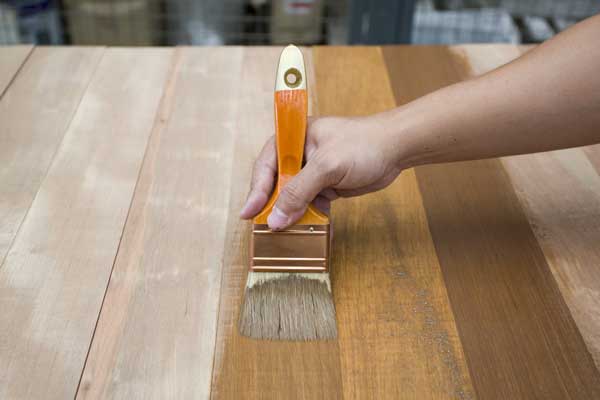Using tung oil on cedar wood isn’t something tough or complex. It is very easy. You just need to follow the steps I am about to show below.
Before we get into the applying process, in case a few of you don’t know, Tung oil is used as a finish on woods.
The oil hardens the wood and protects the wood from the elements. Apart from this, there are other benefits of tung oil as well.
However, let’s not get into that. Below I am going to show you how to use tung oil on cedar woods. Not only cedarwood, using the following method you can use tung oil on any wood.
How to Use Tung Oil on Cedar:
1. Clean the wood properly
Pick a cloth and dip that into warm water. Squeeze off the excess water from the cloth and then start wiping down the wood where you will be using the tung oil.
When wiping make sure to move the cloth either in smooth circles or long linear strokes. And also ensure to wipe against the wood grain.

The goal is to clean the wood thoroughly so that no dust, debris, or anything else remains on the wood and messes with the tung oil you will be applying.
When you will be wiping down the wood properly, that will raise the wood grain. And that will make sanding way more effective and smooth.
2. Strip the wood with TSP
If the wood already has Lacquer or Varnish, or any other finishing, the first thing you will have to do is to get rid of that. You cannot apply the oil over those.
The most effective way to get rid of those is to use Trisodium Phosphate. Get 2 tablespoons of TSP and mix into 1-gallon water.

You will need a sponge or brush to spread the solution throughout the entire wood surface. Though TSP is an extremely effective wood cleaner, it is highly toxic as well.
So if you are very sensitive to fumes or have a breathing problem, you will never want to be around it. Whoever is using this solution, make sure to wear long sleeves, rubber hand gloves, facemask, or respirator.
And also consider applying this solution in a well-ventilated area, outdoor will be the best place.
3. Sand down the wood surface
Pick a 120-grit paper or finer, and then sand the wood surface with that. Sand by making tight cycles, doing so will smoothen the imperfections and inconsistencies of the wood grain.

Do not leave any area when sanding, that will make the surface look inconsistent. Sand down every area, corners, recessed nooks, edges, etc. The better you sand, the better the oil settles on the wood.
4. Wipe off the dust
Once the sanding is done, now it is time to get rid of the sand dust. I am sure there is a lot of sand dust. Pick a used dry cloth and wipe off all the dust from the wood surface.
If you have a blower, initially you can use that to get rid of the dust.
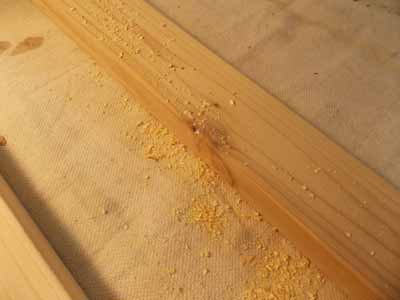
When you think the wood surface is cleaned, take a damp cloth, and then wipe it down again. There shouldn’t be any dust before applying the oil.
And when you wipe the wood with a damp cloth, make sure to dry the wood before applying the oil.
As an alternative to the cloth, you can pick a brush to get rid of the dust.
5. Cover the surrounding area
Now you would want to cover the surrounding area with a tarp or drop cloth. Doing this will protect the surrounding area from getting messy with oil.
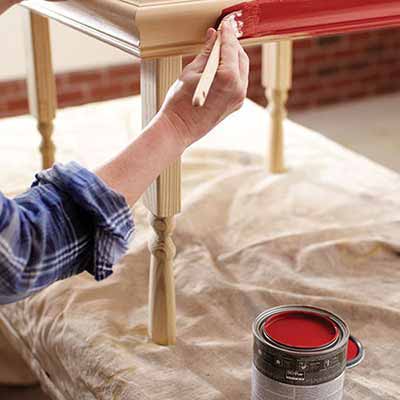
Actually, you can do this before sanding the wood, so that the wood dust wouldn’t mess the working area.
You can simply lay old newspapers down, however, oil can penetrate through but if you make a couple of layers then it might not. Rich oils like tung can give permanent stain on the floor, so be careful.
6. Thinning the oil
You will not be applying the oil directly. Mix the tung oil with solvent. Get turpentine or organic citrus solvent and then mix both the solvent and oil.
The amount of both oil and the solvent should be equal. For example, if you have picked 250 ML of tung oil, then you will have to mix 250 ML solvent to it.
Stir and make sure to mix very well. When the solvent mixes with the oil nicely, you will be able to apply the mixture very easily. You will be able to apply a couple of thin coatings and the finish will look glossier.
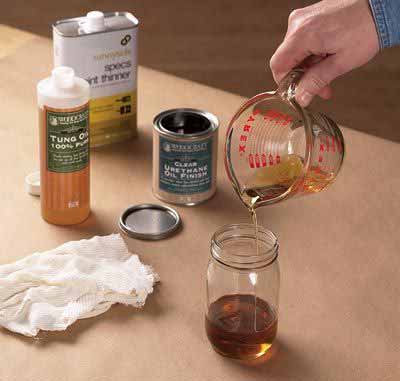
You will not need more than a single canister of tung oil if the project is small. However, let me give you an idea so that you will be able to get the right amount of oil for every project.
¼ gallons of tung oil can easily cover 100 square feet of the wood surface when unfinished. You will need a little less for the finished wood surface.
And remember, do not thin the tung oil if you will be applying the oil to areas where you will be placing the culinary such as cutting boards or spoons, etc.
7. Take a little amount of oil on the rag
Get a rag that is lint-free and then take a small amount of oil on it.
The best way is to fold the rag and place that over the bottle mouth and then flip the bottle upside down. This is the easiest way to take the oil on the rag.
Do not pour the oil directly over the wood surface, that gets uncontrollable sometimes.
Apart from the lint-free rag, you can pick a wide bristle brush or sponge brush as well.
8. Start rubbing the oil
Time to do an intense rubbing on the wood. If you want a very good looking natural pattern then consider rubbing with the grain.
I mean rub towards the direction the wood grains are directed. Edges, legs, corners, underside, cover everything, and do not stop rubbing until the natural slickness goes off.
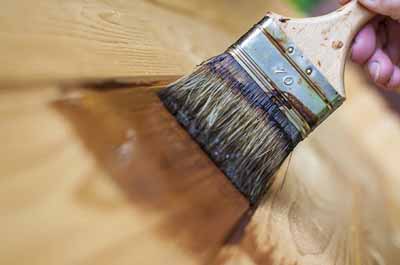
When needed you can take extra oil. If the wood is unfinished then it is so obvious that the wood will absorb more oil, in that case, you will have to add more oil.
When you see the wood is wet and slick, that means the oiling has been done right.
9. Leave it for 2-hours
Once you are done with the oil rubbing, it is time to let the oil sit for a while so that the wood will be able to absorb oil properly.
I will suggest leaving the wood for 2-hours. And also keep in mind, any scratch before the oil sits properly will be seen even when the finish is completed.
So ensure you keep the wood in a safe place and avoid touching the wood.
Conclusion
If you see excess oil after 2 or more hours of rubbing, then get rid of that. Remove the excess oil using the rag. And that is all. That is exactly how you use tung oil on cedar or any other woods. Hope this helps!

